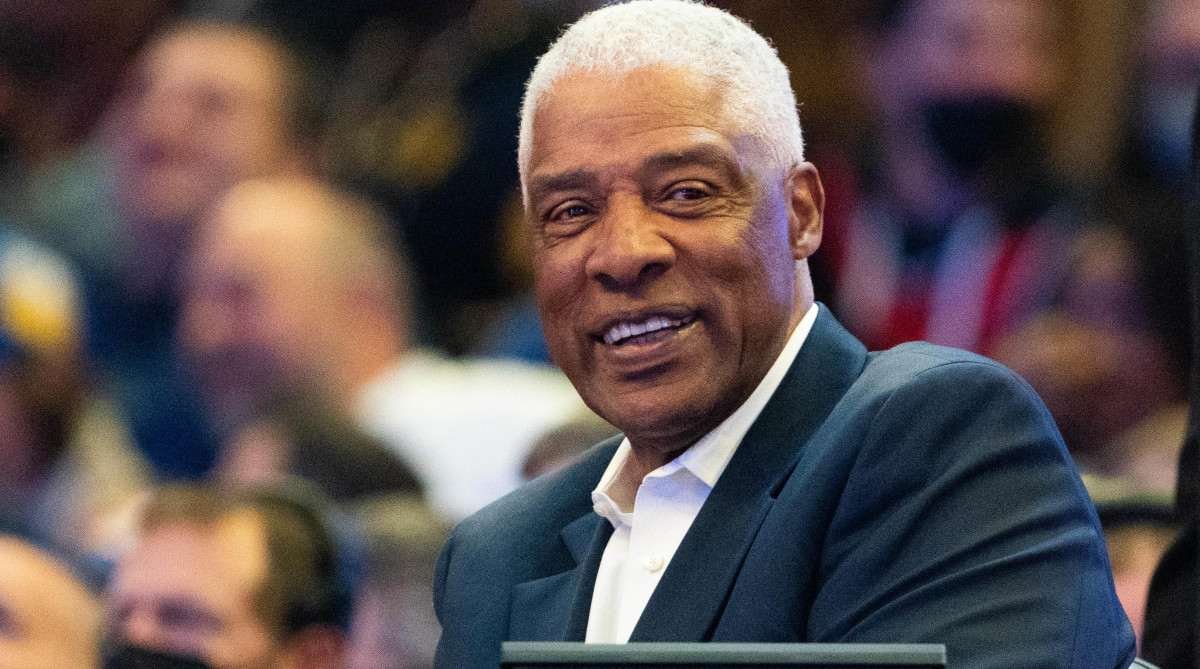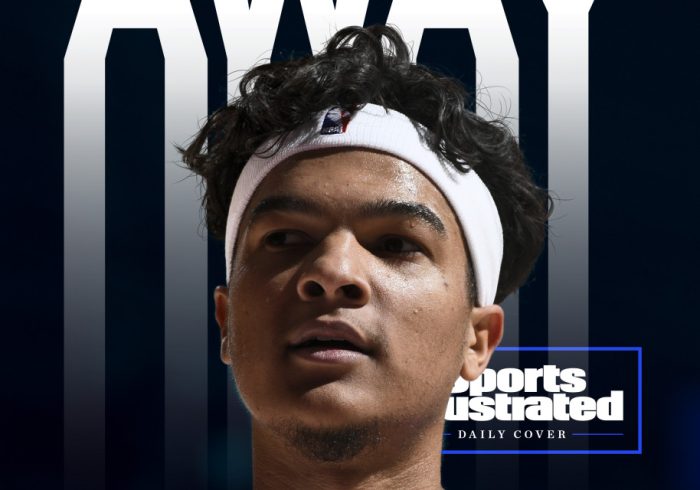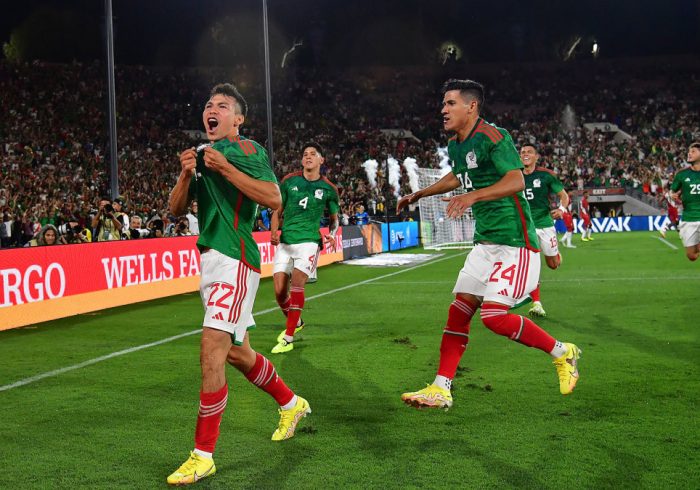It’s Jan. 5, 1983. More than 18,400 made their way to south Philadelphia and filed into the Core States Spectrum Arena to watch their beloved 76ers face the reigning NBA champion Lakers for the first game of the new year but the second in the last month.
It was a heated clash between NBA’s East and West powerhouses. Philadelphia, anchored by four future Naismith Basketball Hall of Famers in Maurice Cheeks, Julius Erving, Bobby Jones and Moses Malone, entered the game winners of four of its last five. And, unknowingly, it was the start of Philly’s longest win streak (14) that season.
The 76ers had their hands full, battling the Lakers’ slate of stars and future NBA legends in Kareem Abdul-Jabbar, Magic Johnson, Bob McAdoo, James Worthy and Jamaal Wilkes. For perspective, Philadelphia was roughly only seven months removed from losing to Pat Riley’s Lakers, 4–2, in the 1982 NBA Finals.
But on the night of Jan. 5, not only did Philadelphia earn a two-game sweep of the Lakers thanks to Andrew Toney’s driving bank shot layup with five seconds left in overtime, but the clash was also the perfect backdrop for one of the most iconic dunks in NBA history.
SI Vault: Alexander Wolff on Dr. J’s legendary career
Cheeks deflected a pass from Worthy, and history began to unfold. Erving ran after the loose ball, picked it up and sprinted down the left side of the court with the ball. With one defender to beat—and an elite defender in Michael Cooper—Dr. J stepped into the lane, cradled and cocked the ball back with his right hand and glided in the air, dunking all over Cooper. Chick Hearn, the Lakers broadcaster, couldn’t believe it. He described what millions of NBA fans have come to know as the “Rock the Baby” slam dunk.
Exactly forty years after the iconic moment, Sports Illustrated spoke with Dr. J to revisit the acclaimed dunk and what it meant to him.
Erving never shied away from contact in the paint, and he certainly didn’t do so with his iconic dunk.
Kyle Terada/USA TODAY Sports
Sports Illustrated: Did you ever think this dunk would be celebrated in the way that it has been over the years?
Julius Erving: Well, I thought that the NBA Slam Dunk contest in 1976 would just be a one-and-done and it would go away. Yet it is still out there. They are still having slam dunk contests. That set the standard. There’s a few guys who did it after me. But there’s only one guy to do it first. I compare that shot with the slam dunk contest. Except that it was on court, in action, midseason. The leading team in the East, the team in the West. You know, we were kind of destined to go to the NBA Finals that year. That was just that was a little sampling of what was to come.
SI: So, you knew once you stole the ball like that you were going to do that particular dunk?
JE: No, not at all. Not at all. You know, I’ve never gone into a game saying ‘I’m going to do this, in this game because this is what I’ve been practicing.’ Never. It was always work on your game. Get an arsenal of plays that you can make left hand right hand left side, right side down the middle. And then on offense, you attack and on defense you defend. You don’t know what it’s going to look like on video, on camera, you don’t know what it’s gonna look like on a poster.
I just knew there were still like three guys, in my early years, there was Artis Gilmore, who was the giant sitting in the paint. Kareem Abdul-Jabbar, who was the man. He was the GOAT for my era. And just for the hell of it, it was Bill Walton. My buddy Bill’s mind was somewhere else when he was off the basketball court. But when he got on that basketball court, he could really play. I got up for those three guys. I said you know what, [if] they man in the paint and I’m going to man up on them, if the opportunity comes, I’m coming full tilt. Bill and I talk about it. He would say, ‘you were always coming.’ That’s all I do. I’m not going to stand out here at no three-point line and get a shot when I can take two points by going in the lane and getting two. If I’m going to the rack, I’m shooting 100%. And, lots of times, I got fouled and got both free throws.
SI: You cuffed the ball but it never touched your left hand. Walk me through that process.
JE: I would say 90% of the time or more when guys go in to dunk the ball, they get in a system of opposite hand. They stuff it into their hand, take off, get airborne and let that momentum of the push help to project them. They come forward to the target, and project back with two hands… I wanted this dunk to live on forever and to prove that people could fly.
SI: What did your teammates say to you after the dunk?
JE: Those guys were falling off the bench. In those days we had World B. Free and Darryl Dawkins. I would run by the bench and just look at them. They were on the ground. I was not surprised or shocked as this was how I played.
SI: How do you view some of the dunks that you see in today’s game?
JE: I was 32 years old. … And now, when I look at the young guns like Ja Morant, Giannis Antetokounmpo, even Joel Embiid, he’s so motivated, the way he takes it to the hole real hard. Jaylen Brown is an awesome guy. I like his game, I just hate seeing him in that green jersey. There’s a handful of guys who will probably be in the dunk contest this year, and I don’t know when [the NBA is] going to ask me to be a judge or not. But if I am a judge, I’m going to judge them, not only against the guys they are competing against but guys who were the greatest of all time. … I’m on the list but you got Dominique Wilkins, Vince Carter, Michael Jordan, Clyde Drexler, Kobe Bryant, those guys were the real deal.



